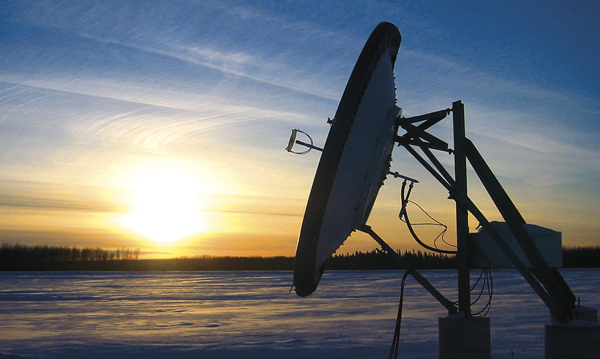The compositions were inspired by electromagnetic wave data coming from the CARISMA network, an array of magnetometers positioned in the ground to measure disturbances in the Earth's magnetic field caused by activity in a region of space near the Earth known as the magnetosphere.
"The idea is to combine science and art to create a piece of music using sounds of space - electromagnetic waves converted to audio frequencies," says U of A physicist Andy Kale.
The Earth is a natural source of radio waves, which surround us but aren't audible to humans. Every time the magnetic field changes, a small voltage is induced and measured by the induction-coil magnetometers of CARISMA (Canadian Array for Realtime Investigations of Magnetic Activity). "The coils measure the changes in the Earth's magnetic field," says Kale. "By speeding these measurements up and converting them into an audio file, you can actually hear them."
The CARISMA experiment is led by U of A professor Ian Mann, a co-investigator with MAARBLE (Monitoring, Analyzing and Assessing Radiation Belt Loss and Energization), which hosts the Sounds of Space competition. The group monitors the data taken by instruments like CARISMA to learn more about the Van Allen radiation belts that surround the Earth.

We at New Trail welcome your comments. Robust debate and criticism are encouraged, provided it is respectful. We reserve the right to reject comments, images or links that attack ethnicity, nationality, religion, gender or sexual orientation; that include offensive language, threats, spam; are fraudulent or defamatory; infringe on copyright or trademarks; and that just generally aren’t very nice. Discussion is monitored and violation of these guidelines will result in comments being disabled.